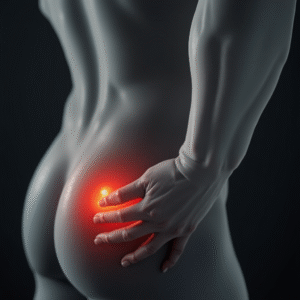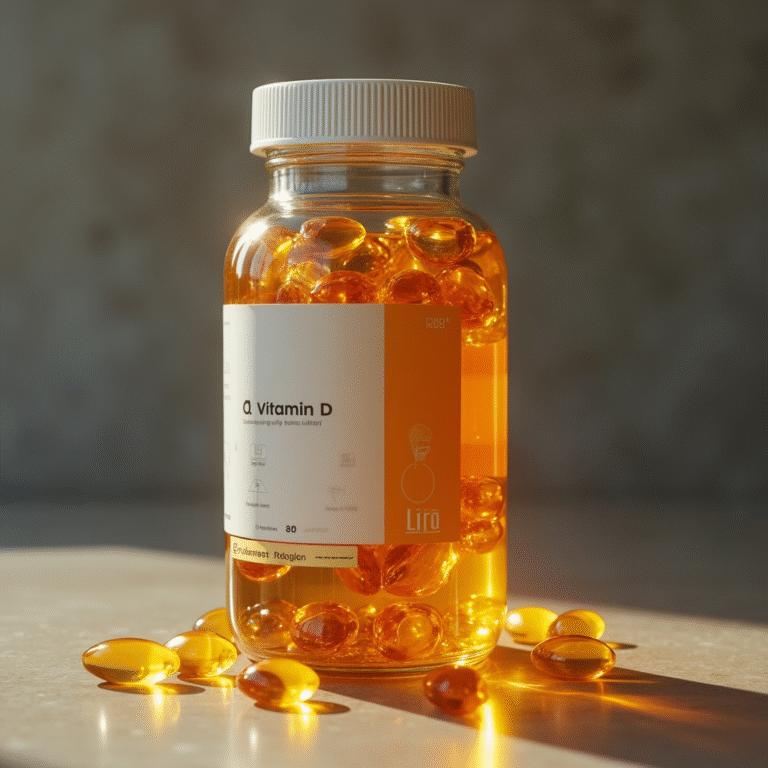How To Prevent Prostate Disease by Making Lifestyle Changes

Prostate cancer is the second most common cancer in men worldwide (after lung cancer) and the fourth most common cancer overall. According to the American Cancer Society, in 2022, there were approximately 1,467,854 new cases of prostate cancer globally, and about 1 in 8 men will be diagnosed with prostate cancer during their lifetime. It also states that prostate cancer is the fifth leading cause of cancer death worldwide, and it recorded 397,430 deaths from prostate cancer globally.
Prostate health is a crucial aspect of every man’s overall well-being, yet it is often overlooked or misunderstood. The prostate gland plays a vital role in reproductive function and urinary control, making it crucial to understand how to maintain it. We will delve into the importance of prostate health, common prevention strategies, early signs of potential issues, and modern treatments available.
The Anatomy of the Prostate: Role and Function in Men's Health
To comprehend the significance of prostate health, understanding its anatomy is essential. Imagine the prostate as a little gland deep within your pelvis that is roughly the size and shape of a walnut. It covers the top portion of the urethra, the tube that transports urine and semen out of the body, and sits directly beneath the bladder, which is where men store their urine.
The main function of the prostate is to produce a unique fluid, which accounts for 20–30% of semen. Because of its mild acidity, this fluid helps shield and nourish sperm, increasing their chances of surviving and reaching the egg. The muscles in the prostate tighten during an orgasm, forcing semen—which is made up of sperm and prostate fluid—through the urethra and out of the body. The muscular tissue of the prostate aids in controlling urine flow because the urethra passes through it. It regulates the flow of urine from the bladder by contracting and relaxing.
As men age, the prostate often enlarges, which can lead to urinary problems such as difficulty starting urination, weak flow, or frequent urges to urinate.
Causes Of Prostate Disease
Benign Prostatic Hyperplasia (BPH)—Enlarged Prostate
The primary cause of BPH is aging. This is almost universal in men. As men age, there are shifts in hormone levels, particularly testosterone and its more potent derivative, dihydrotestosterone (DHT), and also estrogen.
Prostatitis—Inflammation of the Prostate
Bacterial infections (both acute and chronic) or, more frequently, a complicated and frequently unidentified confluence of immune system, muscle, and nerve components (CP/CPPS) can cause prostatitis.
Prostate Cancer—Uncontrolled Cell Growth
Prostate cancer originates from abnormal cell growth driven by DNA mutations, with key risk factors being increasing age, genetic predisposition (including family history and specific inherited mutations), racial background, and certain lifestyle factors like obesity and diet. Understanding these causes helps us appreciate why prevention and early detection strategies are so vital for maintaining men’s prostate health.
Common Prostate Conditions: Recognizing Early Signs and Symptoms
Benign Prostatic Hyperplasia (BPH)—The “aging prostate” is, quite simply, a non-cancerous enlargement of the prostate gland. It is an almost inevitable consequence of male aging, much like gray hair or wrinkles. The keyword here is “benign”—it is not cancer. Some symptoms of this aging prostate are, but are not limited to, the following:
- The Midnight Marathon Man—if you are a man over 60 years of age who used to sleep soundly through the night. Now, he finds himself waking up three, four, or even five times to urinate. He shuffles to the bathroom, perhaps stands there for a moment, waiting for the stream to start, and when it does, it’s weaker than it used to be. He might feel as though he hasn’t completely emptied his bladder, leading to another trip shortly after. This frequent nocturnal urination (nocturia) and the hesitant, weak stream are classic BPH symptoms.
- The Urgent Commute—Picture a man over 55, who now experiences sudden, intense urges to urinate, sometimes making it difficult to reach a restroom in time. He might even have a few drops of leakage before he can get there. This urgency is because the bladder, trying to push urine past the enlarged prostate, becomes “irritable” and contracts more forcefully and frequently.
Prostatitis refers to inflammation of the prostate gland. Unlike BPH, it can affect men of any age, though certain types are more common in younger or middle-aged men. It often presents with pain and discomfort.
- The Sudden, Intense Pain: if you are a young man, say 35, who suddenly develops a high fever, chills, and severe pain in his lower back and groin, urinating is excruciatingly painful, and it has become a struggle to pass urine. This acute onset of severe symptoms, often accompanied by general unwellness, is highly suggestive of acute bacterial prostatitis.
Prostate cancer occurs when cells in the prostate gland grow uncontrollably. This is perhaps the most concerning of the prostate conditions, but importantly, many prostate cancers grow very slowly and may never cause symptoms or require aggressive treatment.
- The Advanced Symptom Presentation: all men over 60 who have recently developed persistent, unexplained back pain that doesn’t respond to typical pain relievers and might also be experiencing significant weight loss, fatigue, or new urinary problems like blood in their urine or severe difficulty urinating. These more pronounced symptoms can indicate that the cancer has grown larger or spread (metastasized) to other parts of the body, most commonly bones, leading to bone pain.
Integrating Lifestyle Changes for Effective Prevention Of Prostate Disease
Step 1: Optimize Your Diet—Eat Your Way to a Healthy Prostate By Focusing on Nutrient-Rich Whole Foods.

- Increase Fruits and Vegetables: Aim for at least 5-7 servings daily, focusing on a wide variety of colors. Start your day with berries in your oatmeal or a fruit smoothie. Have a large salad with lunch and two different cooked vegetables with dinner.
- Lycopene-rich foods: cooked tomatoes (sauces, paste), watermelon, and pink grapefruit. Lycopene is a powerful antioxidant, particularly beneficial for prostate cancer prevention.
- Cruciferous Vegetables: Broccoli, cauliflower, cabbage, Brussels sprouts, and kale. These contain compounds (like sulforaphane) that may help inhibit cancer cell growth.
Choose Healthy Fats: Focus on monounsaturated and polyunsaturated fats. Use olive oil for cooking, snack on a handful of almonds or walnuts, and add avocado to your salads.
- Avoid/Limit: Saturated fats (found in red meat and full-fat dairy) and trans fats (processed foods), which have been linked to increased prostate cancer risk.
- Lean Protein Sources: Opt for fish, poultry, beans, and lentils. Replace some red meat meals with baked salmon twice a week or incorporate lentil soup into your diet.
- Limit Red and Processed Meats: High consumption has been associated with increased prostate cancer risk. Aim for not more than 1-2 servings per week.
- Increase Fiber Intake: Found in whole grains, fruits, vegetables, and legumes. Switch to whole-wheat bread and pasta, add beans to your stews, and ensure adequate vegetable intake. Fiber aids digestion and overall health.
- Limit Sugary Drinks and Refined Carbs: These contribute to inflammation and weight gain, both detrimental to health. Choose water or unsweetened tea over sodas and juices. Opt for whole grains over white bread and sugary cereals.
Step 2: Maintain a Healthy Weight —Manage Your Waistline, Protect Your Prostate

- Achieve and Maintain a Healthy BMI: Work towards a Body Mass Index (BMI) between 18.5 and 24.9. If you are overweight or obese, even a modest weight loss of 5-10% of your body weight can have significant health benefits. Combine dietary changes (Step 1) with increased physical activity (Step 3).
- Measure Waist Circumference: A waist circumference of less than 94 cm (37 inches) for men is generally recommended. Use a tape measure to track your waist circumference monthly. Central obesity (belly fat) is particularly linked to prostate issues.
Step 3: Engage in Regular Physical Activity —Move Your Body, Move Your Health

- Aerobic Exercise: Aim for at least 150 minutes of moderate-intensity aerobic activity or 75 minutes of vigorous-intensity aerobic activity per week. This could be brisk walking for 30 minutes, five times a week; cycling; swimming; or jogging. Break it into 10-minute bouts if needed.
- Strength Training: Incorporate strength training exercises at least two times per week. Use bodyweight exercises (push-ups, squats), resistance bands, or weights.
- Reduce Sedentary Time: Limit prolonged sitting. If you have a desk job, take short breaks every hour to stand, stretch, or walk around.
Step 4: Stay Hydrated —The Simple Elixir

- Drink Plenty of Water: Aim for 8-10 glasses (2-2.5 liters) of water daily. Carry a water bottle with you and refill it throughout the day.
- Limit Irritants (especially for BPH/Prostatitis): If you experience frequent urination or urgency, try reducing your intake of caffeine (coffee, tea, sodas), alcohol, and spicy foods, especially in the evenings. These can irritate the bladder and prostate, exacerbating BPH/prostatitis symptoms.
Step 5: Manage Stress—Calm Your Mind, Calm Your Body

- Incorporate Stress-Reduction Techniques: Practice mindfulness meditation for 10-15 minutes daily, engage in deep breathing exercises, or pursue hobbies that you find relaxing (e.g., reading, gardening, listening to music).
- Ensure Adequate Sleep: Aim for 7-9 hours of quality sleep per night. Establish a consistent sleep schedule, create a relaxing bedtime routine, and ensure your bedroom is dark, quiet, and cool.
Step 6: Smart Supplementation (with caution and doctor's advice)

- Vitamin D: Some studies suggest a link between low vitamin D levels and increased prostate cancer risk.
- Selenium: An antioxidant, though studies on its role in prostate cancer prevention are mixed.
- Omega-3 Fatty Acids: Anti-inflammatory properties, found in fatty fish or fish oil supplements.
- Saw Palmetto: Often used for BPH symptoms, but scientific evidence for its effectiveness is inconsistent.
- Zinc: Important for prostate function, but excessive intake can be harmful.
Step 7: Regular Medical Check-ups – Know Your Numbers, Know Your Health

- Annual Physical Exams: Discuss your prostate health with your doctor, especially if you are over 40 or have a family history of prostate cancer.
- Discuss Screening Options: Understand the pros and cons of PSA testing and digital rectal exams (DRE) with your doctor to determine if and when screening is appropriate for you. Early detection of prostate cancer can significantly improve outcomes.
- Address Symptoms Promptly: If you experience any urinary symptoms (e.g., frequent urination, weak stream, urgency, or pain), don’t hesitate to seek medical advice. Early intervention for BPH and prostatitis can prevent complications and improve your quality of life.
Conclusion: Prioritizing Prostate Health for a Better Quality of Life
In conclusion, taking proactive steps to prioritize your prostate health can significantly enhance your overall quality of life. By combining medical treatments with lifestyle adjustments, such as a balanced diet, regular exercise, and stress management, you can reduce the risk of prostate issues and promote well-being. Remember that early detection through regular check-ups is key, so don’t hesitate to consult your healthcare provider for guidance. Embracing a holistic approach to prostate health empowers you to make informed decisions and maintain a healthier lifestyle. Stay committed to your well-being and strive for a healthier, happier life. Your prostate health matters—take charge of it today!